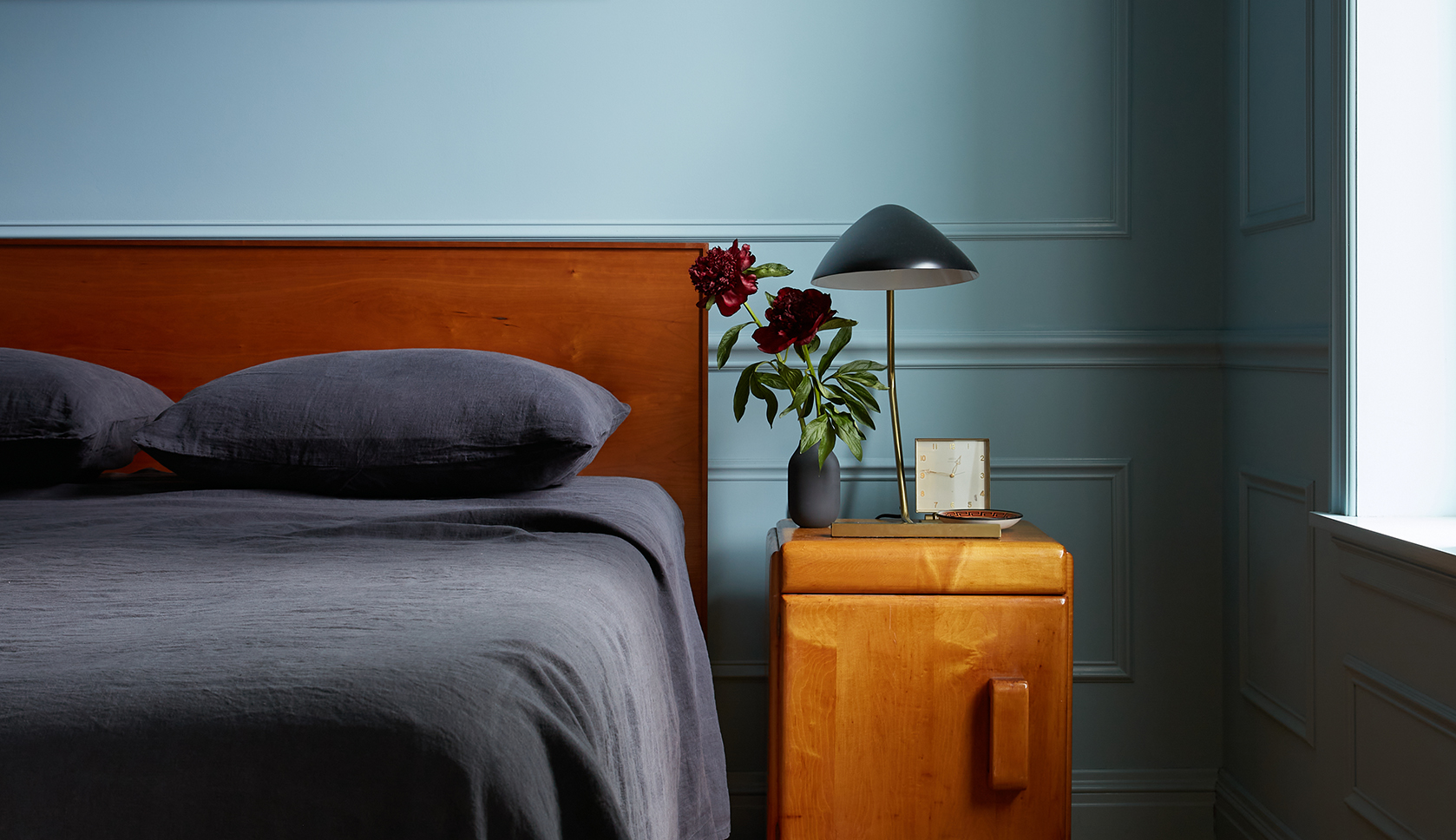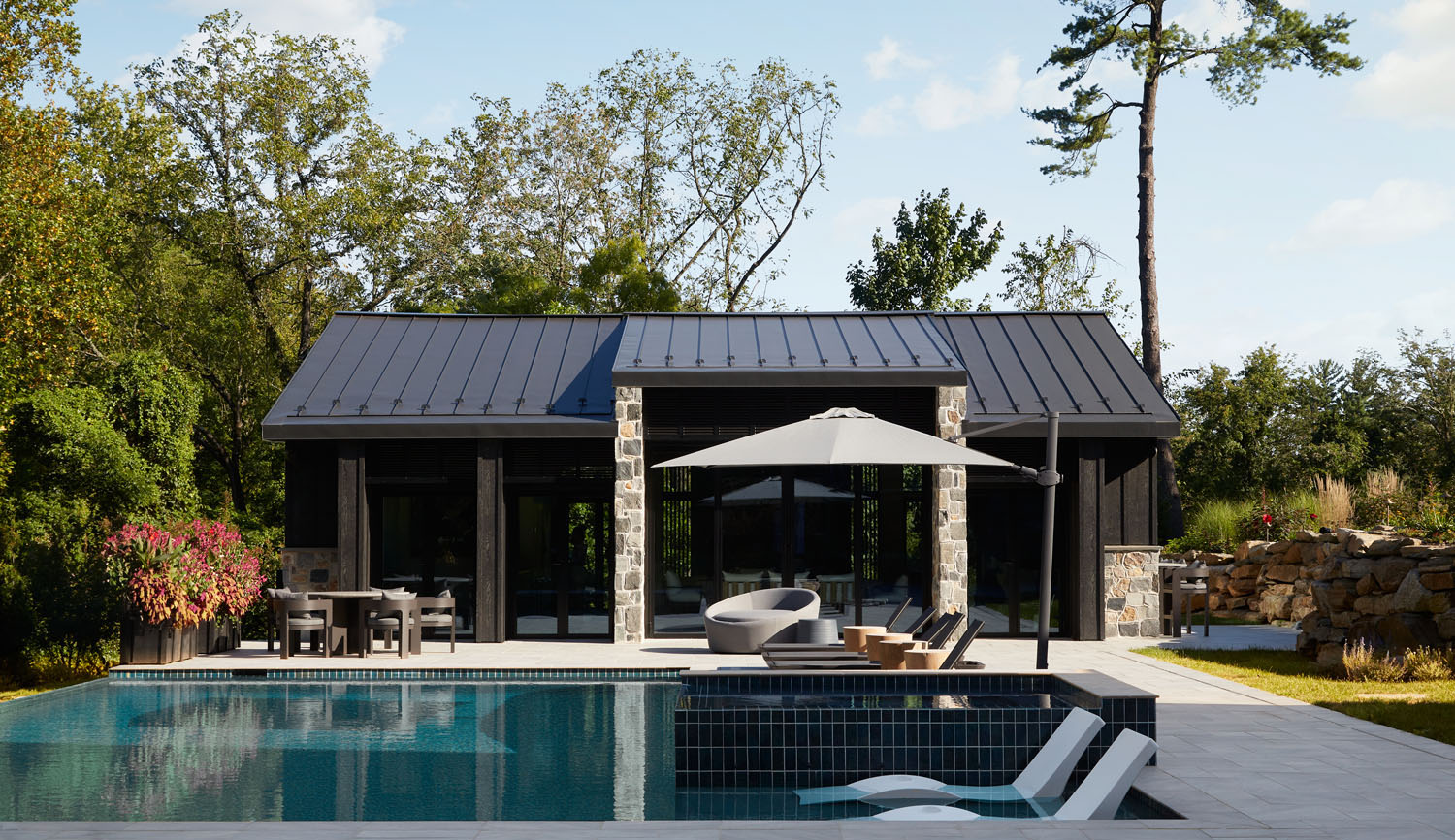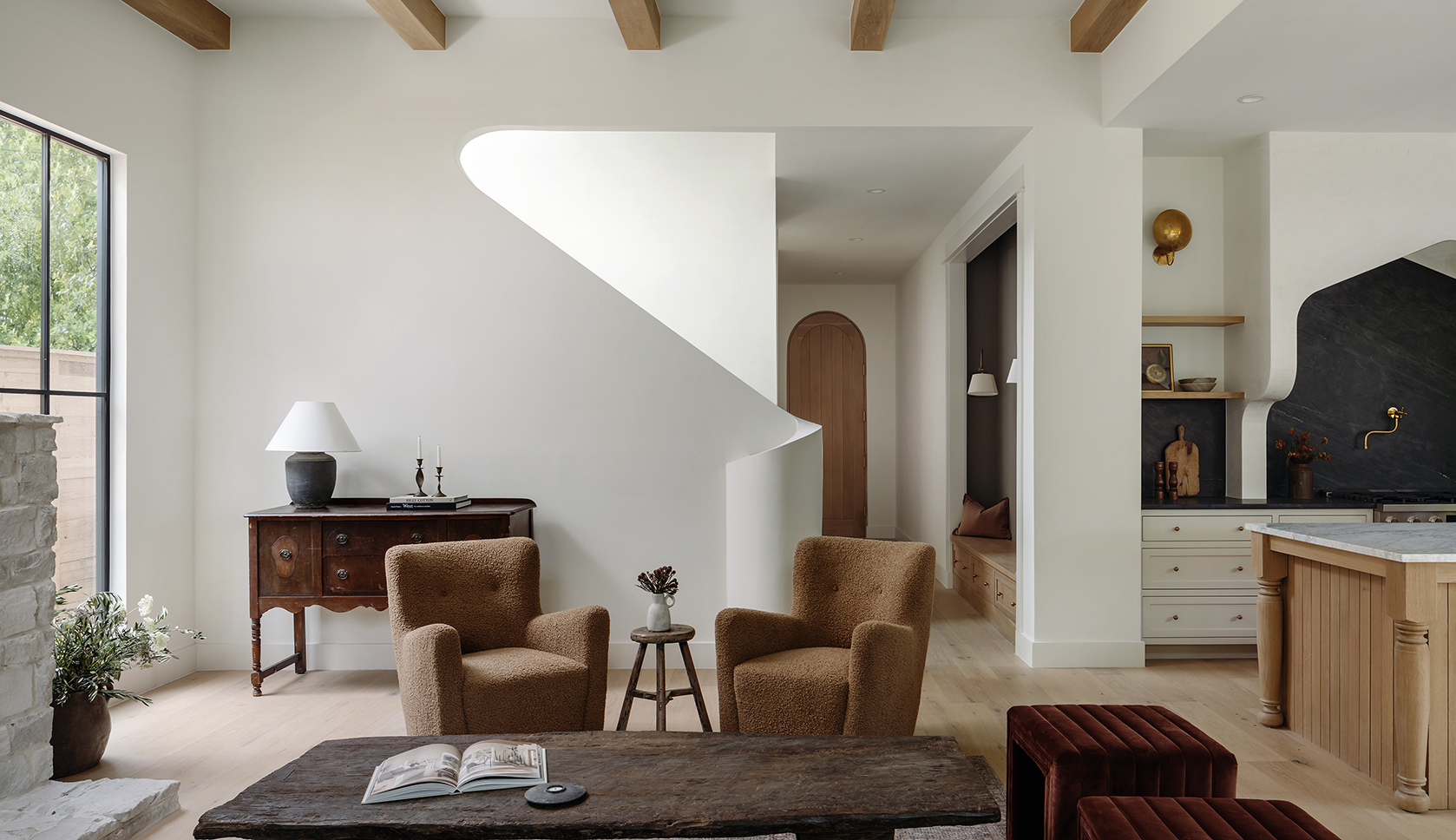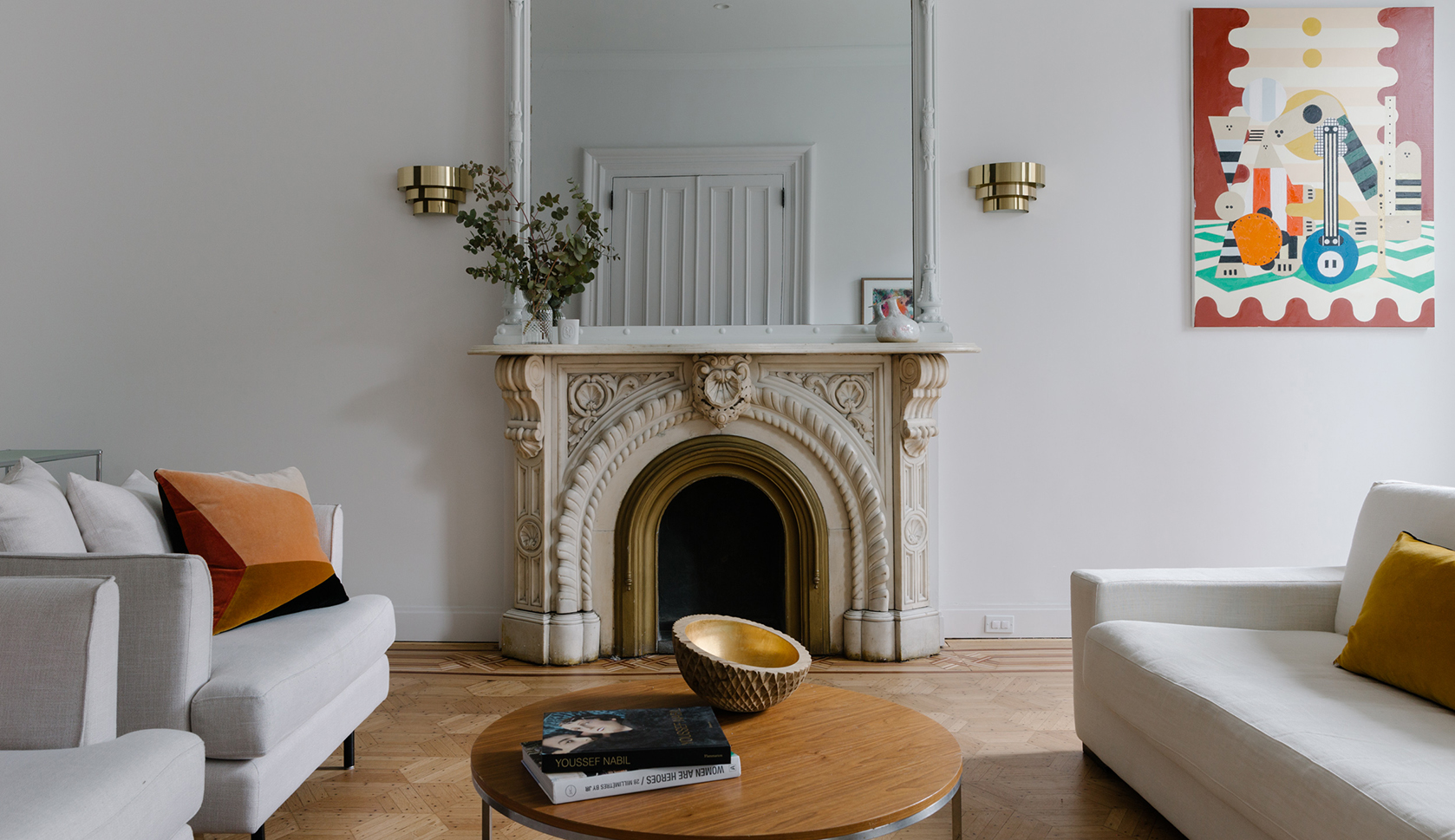Designer Allegra Muzzillo of ACM Interiors is anything but boring. In fact, we’d call her bold, absolutely interesting, and 100% confident in her own tastes. (Not to mention, fearless when it comes to renovating a building from the 1880s.) Though she’s made a name for herself designing eclectic, multilayered spaces throughout Manhattan and Brooklyn, today she’s sharing a design project close to her heart: her own home. She shares the nitty gritty (even costs!), offers tips for budding designers, and tells us what home means to her.
Hi Allegra! Tell us about your home. Where is it, and how big is the space?
The home is a late-1870s brownstone row house built in the “Altered French Second Empire” style with a mansard roof. It measures 2,700sq ft total with the owner’s unit comprising 1,500 of that. The structure itself is actually super-skinny, too, at just 16ft wide.
Our owner’s unit spans 3 floors and consists of a finished basement (“hospitality suite” in realtor speak) and the first floor is an open-plan space wherein formal living/dining areas adjoin a full bath and a kitchen leading to a deck and backyard. On the second floor there are 2 bedrooms and one full bath. The home’s top two floors (the home has 5 floors total) comprise a sizable rental property. I live in the owner’s unit with my husband, Michael, and our two cats.
We’ve both lived in NYC for 22 years now, and most were spent living in Brooklyn, which we’re completely enamored with. It was always our shared dream to buy a brownstone in Brooklyn, renovate it, and make it ours to enjoy for years to come. (My husband and I both enjoy “projects.” Ha.) Cliche? Probably. But we really have had to earn it—and it took a while (and not a small sum of money) to get the home to where it is now. You really have to be laser-beam focused on exactly how you want to live in a home like this because the concepts of ample storage and large, expansive rooms are completely foreign in this type of a home. So, you either add a ton of storage (that takes up even more space) or you downsize your belongings a bit and stick to organizational tactics, and a one-in, one-out rule when it comes to bringing things in, which we did.
What first drew you to this property in particular?
This home’s first-floor kitchen configuration was a big selling point for us: In our neighborhood the majority of homes have kitchens and living areas on the second floor, rather than the ground floor, which never appealed to us at all. (How could we enjoy the yard?) This typical layout severely limits what can be achieved in the backyard and can truncate the space by as much as 75%. Why, because most layouts also include a metal (per city, has to be metal vs wood) entertaining/dining deck (that’s ugly as sin) extending from the second floor, just outside the kitchen. Although the deck is optional, many homeowners opt for it because of the second-floor kitchen layout. And once they opt for it, they then need an egress (staircase) that takes up virtually the whole backyard space. It’s so unfortunate, really.
So, it had the layout you wanted, but what condition was it in at the start??
OK, so the home was kind of awful. What’s that saying? Why put lipstick on a pig? It’s like the previous homeowner threw up some sheetrock to hide everything that was really going on. In this sense, I mean that we had to peel the home back, layer by layer, to ensure its structure was sound. Once you peeled back this area, it uncovered another that needed attention. (We ended up needing to entirely replace 2 staircases and bolster structural supports that were either cut by an unscrupulous contractor(s) or were nonexistent(!) The subcontractor, my husband (who acted as the GC), and I found ourselves scratching our heads thinking, ‘How is this house still standing,’ on more than one occasion—let’s just say that.
From the get-go the house had its issues—but we remained pretty positive throughout the experience because we knew what we were getting ourselves into. But when we went to do some plumbing work in the rental unit early on (mind you, we were moved in at this point), as soon as the wall was opened, it started raining soot. Black, greasy, sticky soot. Everywhere. The cats were covered. The newly painted walls—all of it. And it rained down soot for about a week. Why? There was a previous fire in the wall. Oh, and our neighbor’s oil heater was being vented into our wall. And you know that scene in the Money Pit? Well, one of the plumbers made a human-sized hole in our newly-sheet rocked basement ceiling when he fell through it by walking between the floor joists in the kitchen upstairs. But we took it all in stride—and we enjoyed every minute of the reno. Now we know our home inside-out, and we also know it’ll take care of us; everything has been done right.
If you’re comfortable sharing, what did the renovation cost?
The home was a near-total gut renovation that cost roughly $300,000. As in any reno, there were unexpected costs once walls were peeled back. But when we purchased the home, we definitely knew what we were getting into, and the fact that my husband is also a mechanical contractor helped, too. He made project management easy—and we’re a good team.
One trick we used to keep reno costs down—and because unexpectedly expensive fixes always, ALWAYS come up in a reno project—was keeping the footprint of the home the same, ostensibly, so that the costs of moving utility/plumbing connections and creating new room layouts didn’t eat up our budget. We chose to put money into making the home structurally sound and investing the other portion of our budget into what we can visually see (versus what’s behind the walls).
Now that the renovation is done, how would you describe the style?
It’s pretty much moody-Parisian-eclectic, I think, which I view as classic, grand, multilayered, interesting, comforting, and colorful. It’s really a highly arty, curated aesthetic where decorative items are those with stories, meaning, and high-quality craftsmanship that’s able to be recognized right away. I definitely love taking a more-is-more stance to my designs—whether it comes to texture, color, decor, patterns, or all of it—I die for anything that makes some sort of a quirky, nuanced, artistic, grandiose statement. My ideal client is willing to go there. But since I know not everyone can live like that, I also understand the importance of organization and living a slightly more pared-down lifestyle, with clean, pared-back workspaces, countertops, and surfaces.
Finally, what do you think your home says about you?
That I’m a free spirit who loves to surround herself with beautiful things that make me happy.
Follow Allegra on Instagram here.



















